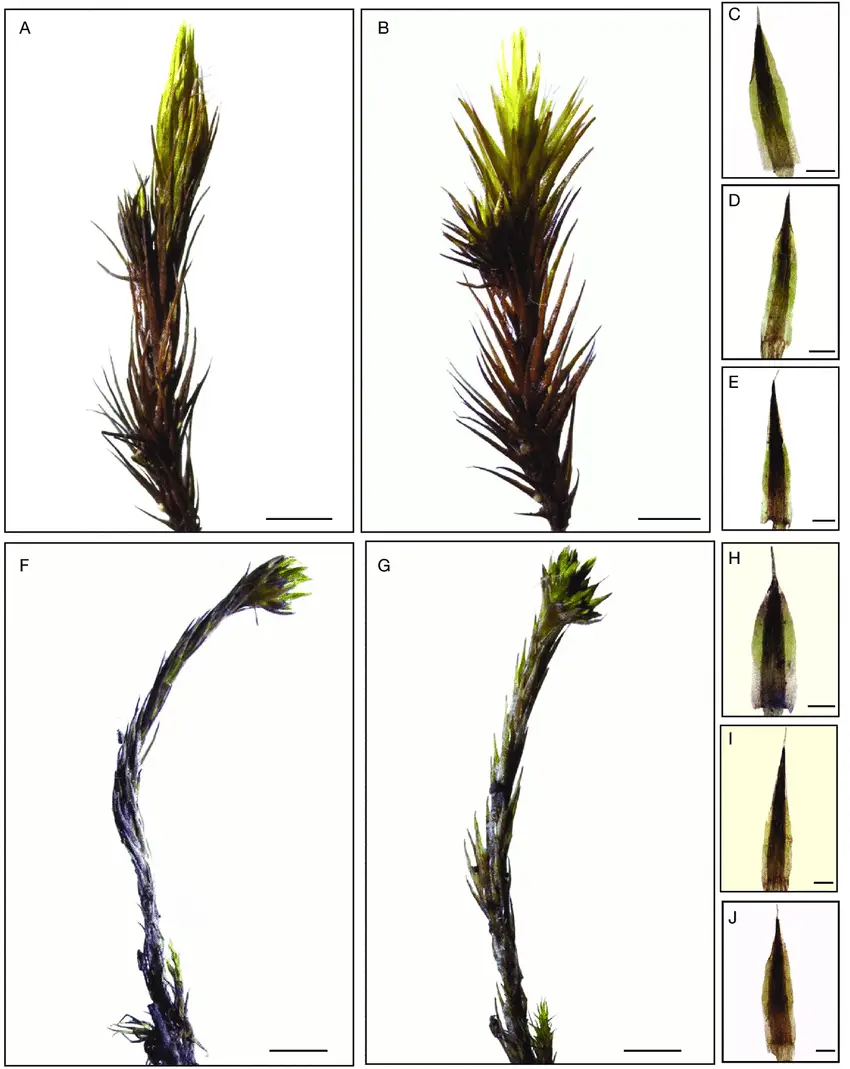Unveiling Campylopus: A Fascinating Moss for Enthusiasts
Affiliate Disclaimer: As an affiliate, we may earn a small commission when you make a purchase from any of the links on this page at no additional cost to you!

Species-analyzed-A-E-Campylopus-lamellatus-Mont-F-J-Campylopus-julaceus-A-Jaeger.png from: https://www.researchgate.net/figure/Species-analyzed-A-E-Campylopus-lamellatus-Mont-F-J-Campylopus-julaceus-A-Jaeger_fig1_347297243
Introduction
In the vast and captivating world of bryophytes, one particular moss species stands out as a true marvel – the Campylopus julaceus A.Jaeger. Belonging to the Leucobryaceae family, this unassuming yet remarkable plant has captured the hearts and minds of moss enthusiasts worldwide. Let’s embark on a journey to unravel the secrets of this extraordinary moss, exploring its unique characteristics, global distribution, and ecological significance.
Background
Before delving into the intricacies of Campylopus julaceus, it’s essential to understand the broader context of bryophytes. These non-vascular plants, which include mosses, liverworts, and hornworts, are often overlooked but play a crucial role in various ecosystems. They are among the oldest land plants on Earth, with a rich evolutionary history dating back millions of years.
Main Content
Morphology and Identification
Campylopus julaceus is a striking moss species, characterized by its vibrant green to yellowish-green hue. Its slender stems can reach heights of up to 10 centimeters, forming dense tufts or cushions. The leaves are narrow and curved, giving the plant a distinctive appearance. One of the most remarkable features of this moss is its ability to produce specialized structures called gemmae, which aid in asexual reproduction.
Global Distribution and Habitat
Campylopus julaceus is widely distributed across various regions of the world, including Europe, Asia, Africa, and the Americas. It thrives in a diverse range of habitats, from moist and shaded areas to exposed rock surfaces and even disturbed environments like roadside banks and quarries. This moss is particularly well-adapted to acidic soils, making it a common sight in coniferous forests and heathlands.
Ecological Roles and Adaptations
Despite its diminutive size, Campylopus julaceus plays a vital role in its ecosystem. It acts as a pioneer species, colonizing bare or disturbed areas and facilitating the establishment of other plant species. Additionally, this moss contributes to soil formation and water retention, creating favorable conditions for various organisms to thrive.
One of the remarkable adaptations of Campylopus julaceus is its ability to withstand desiccation. During dry periods, the plant can curl up its leaves and enter a dormant state, only to revive when moisture becomes available again. This resilience allows it to survive in harsh environments and contributes to its widespread distribution.
Case Studies/Examples
In a recent study conducted in the United Kingdom, researchers investigated the role of Campylopus julaceus in the restoration of degraded heathlands. The results showed that this moss played a crucial role in stabilizing the soil and creating suitable conditions for the reintroduction of other plant species, ultimately contributing to the successful restoration of these valuable ecosystems.
Technical Table
| Characteristic | Description |
|---|---|
| Scientific Name | Campylopus julaceus A.Jaeger |
| Family | Leucobryaceae |
| Common Name | Campylopus |
| Growth Form | Tufted or cushion-forming |
| Leaf Shape | Narrow, curved |
| Reproduction | Sexual and asexual (via gemmae) |
| Habitat | Moist, shaded areas, rock surfaces, disturbed environments |
| Distribution | Europe, Asia, Africa, Americas |
| Ecological Role | Pioneer species, soil formation, water retention |
| Adaptations | Desiccation tolerance, acidic soil preference |
Conclusion
The Campylopus julaceus A.Jaeger moss, a member of the Leucobryaceae family, is a true testament to the incredible diversity and resilience of the bryophyte world. From its striking morphology and global distribution to its ecological significance and remarkable adaptations, this unassuming plant continues to captivate and inspire moss enthusiasts worldwide. As we delve deeper into the intricate world of bryophytes, we are reminded of the intricate web of life that surrounds us, and the importance of preserving and appreciating even the smallest of nature’s wonders.
Ponder this: In a world where we often overlook the smallest of creatures, what other hidden marvels might be waiting to be discovered, and how can we foster a greater appreciation for the intricate tapestry of life that surrounds us?
